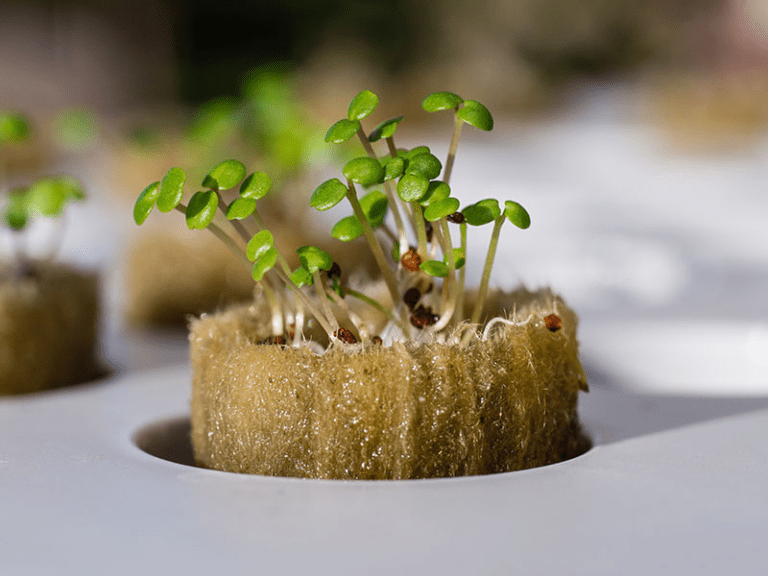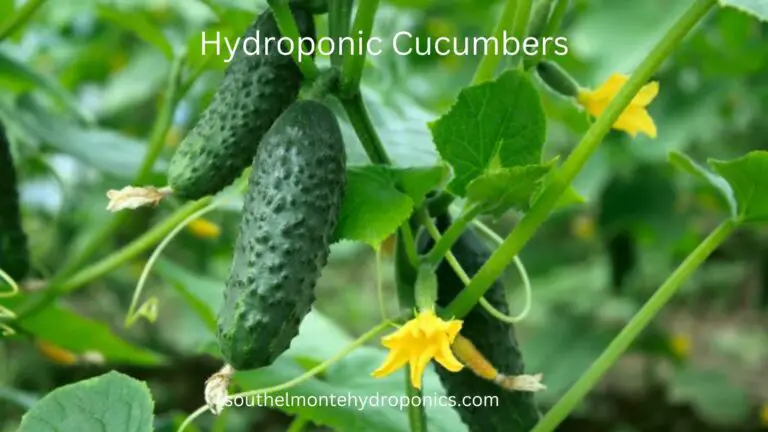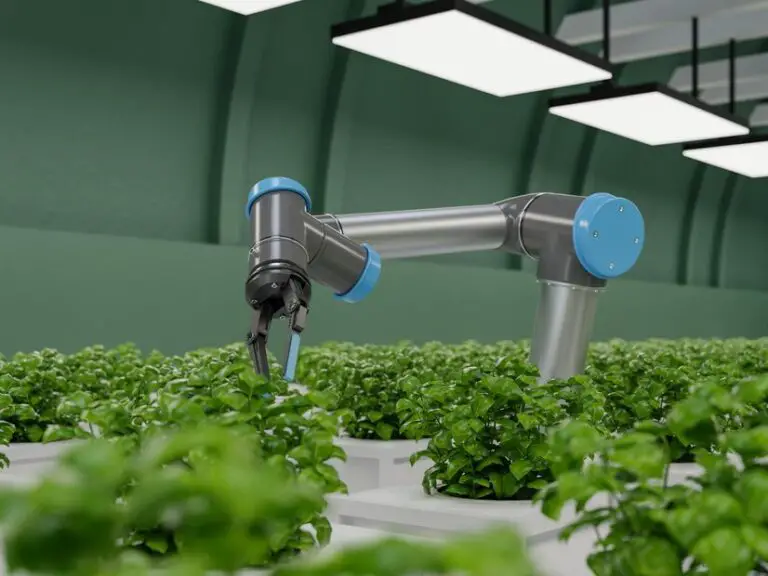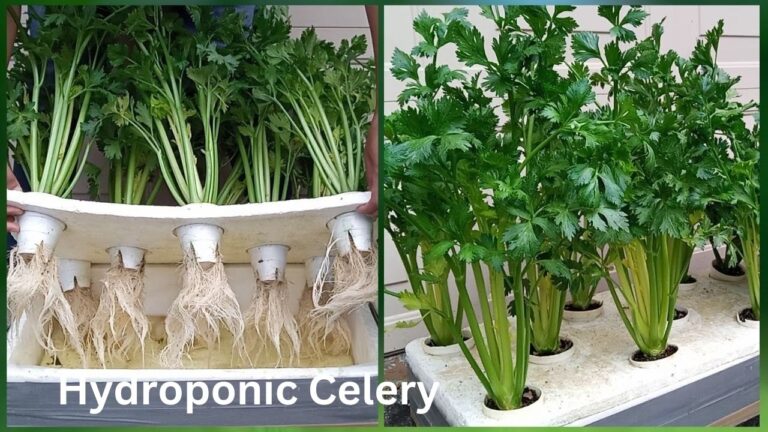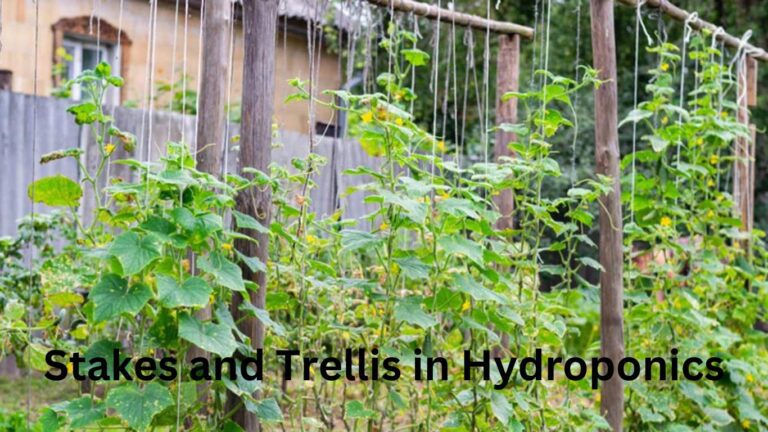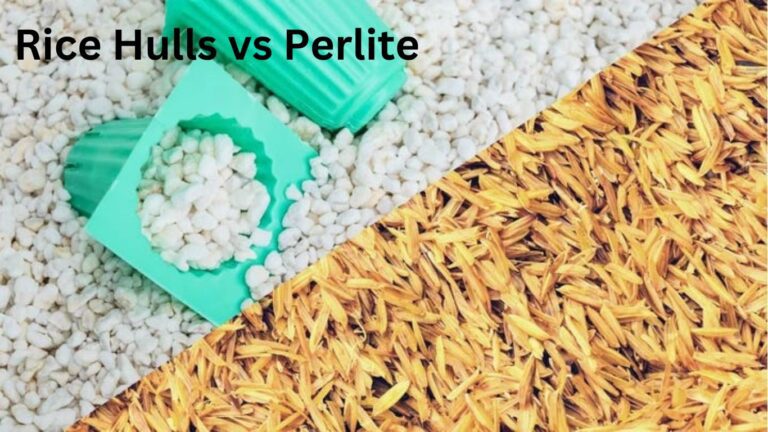Hydroponic Zucchini: How to Grow Healthy and Delicious Zucchini in Water
Table of Contents
Why Choose Hydroponic Zucchini Cultivation?
Hydroponic zucchini cultivation offers numerous advantages for gardening enthusiasts. One of the key benefits is the ability to control the growing environment, allowing for optimal growth and yield. In a hydroponic system, growers have complete control over factors such as nutrient levels, pH, and water quality, which greatly influence the plant’s health and productivity. This level of precision ensures that the zucchini plants receive the ideal conditions for growth, resulting in higher quality and quantity of produce.
Another advantage of hydroponic zucchini cultivation is the ability to maximize limited space. Traditional soil-based gardening often requires ample land space, which may not be available to everyone. With hydroponics, zucchini plants can be grown vertically or in compact systems, utilizing minimal space while still providing a bountiful harvest. This makes hydroponic zucchini cultivation a great option for urban dwellers or individuals with limited garden space.

Furthermore, hydroponic systems have proven to be highly efficient in water usage compared to traditional soil-based methods. The recirculating nature of hydroponics allows for water conservation, as the nutrient solution is reused rather than lost through drainage. This not only reduces water consumption but also prevents nutrient runoff, minimizing environmental impact. With the growing concern for sustainable practices, hydroponic zucchini cultivation is an environmentally friendly choice that promotes resource efficiency.
In conclusion, hydroponic zucchini cultivation offers precise control over the growing environment, maximizes limited space, and promotes water efficiency. These advantages make it an appealing option for gardening enthusiasts seeking to grow their own fresh and nutritious zucchini. In the following sections, we will delve deeper into the basics of hydroponics, the ideal growing environment for zucchini, and the necessary steps to start and maintain a successful hydroponic zucchini garden.
Understanding the Basics of Hydroponics
Hydroponics is a highly efficient method of cultivation that is gaining popularity among gardening enthusiasts. Unlike traditional soil-based farming, hydroponics involves growing plants in a nutrient-rich water solution, without the use of soil. By providing the exact nutrients and water needed, hydroponics allows plants to grow faster and healthier, resulting in higher yields.
One of the key advantages of hydroponics is its ability to maximize space utilization. With soil-based farming, plants require adequate space for root growth, whereas in hydroponics, the roots are directly exposed to the nutrient solution. This means that plants can be grown closer together, allowing for more plants in a limited area. This is particularly beneficial for urban gardeners with limited space or those who want to maximize their crop production. Additionally, hydroponics eliminates the need for weeding, as there are no soil-borne weeds to compete with the plants for nutrients and water.
Furthermore, hydroponics offers precise control over the growing environment, making it ideal for year-round cultivation. By adjusting factors such as temperature, humidity, and lighting, hydroponic growers can create an optimal environment for their plants. This level of control allows for consistent and predictable growth, regardless of the external conditions. Moreover, since hydroponic systems typically recycle and re-circulate the nutrient solution, it results in efficient water usage, making it a sustainable choice for cultivation.

Hydroponics is a technique that involves growing plants without soil, using a nutrient-rich water solution instead. This method offers several advantages, including space efficiency, precise control over the growing environment, and reduced water usage. By eliminating the need for soil, hydroponics enables gardeners to grow more plants in a limited space and eliminates the hassle of weeding. Additionally, hydroponic systems allow for precise control over factors like temperature, humidity, and lighting, ensuring consistent and predictable growth throughout the year. Considering these benefits, it is no wonder that hydroponics is becoming increasingly popular among gardening enthusiasts.
Selecting the Right Zucchini Varieties for Hydroponic Cultivation
When selecting the right zucchini varieties for hydroponic cultivation, it is important to consider several factors that can impact the success of your plants. Firstly, choose varieties that are known for their compact size and bushy growth habit, as this will maximize the use of vertical space in your hydroponic system. Look for zucchini varieties that have demonstrated adaptability to hydroponic conditions and can withstand the specific environmental parameters of your setup.
Additionally, consider the fruiting characteristics of the zucchini varieties you are considering. Some varieties produce high yields of smaller-sized zucchinis, which can be ideal for continuous harvesting and maximizing productivity. Others may produce fewer but larger fruits, which can be advantageous if you prefer larger zucchinis for culinary purposes. Understanding your preferences and goals will help you make an informed decision in selecting the right zucchini varieties for your hydroponic system.
Providing the Ideal Growing Environment for Hydroponic Zucchini
To ensure the successful growth of hydroponic zucchini, it is crucial to provide the ideal growing environment. One key factor is the lighting. Zucchini plants require a minimum of 12 to 16 hours of light each day to thrive. LED grow lights are highly recommended for their energy efficiency and ability to provide the spectrum of light needed for optimal growth.
In addition to lighting, maintaining the right temperature is essential. Zucchini plants prefer temperatures between 70 and 85 degrees Fahrenheit during the day and slightly cooler temperatures at night. Proper ventilation and air circulation are also necessary to prevent the buildup of heat, which can lead to plant stress or even plant death. Investing in a good quality exhaust fan can help regulate the temperature and humidity, ensuring a suitable environment for your hydroponic zucchini.
When it comes to the growing medium, ensure that it has good drainage capabilities and is pH balanced. A popular choice for hydroponic zucchini is coconut coir, as it retains moisture while allowing excess water to drain. It is important to regularly monitor the pH levels of the growing medium and adjust as necessary to maintain the ideal range of 5.8 to 6.5. This will enable the plants to absorb nutrients efficiently and avoid any nutrient deficiencies or imbalances.
Lastly, maintaining a clean and sterile environment is vital to prevent the growth of pathogens and diseases that can harm your zucchini plants. Regularly disinfecting your hydroponic system, including the growing trays, reservoir, and any tools used, will help minimize the risk of contamination. Additionally, maintaining proper hygiene practices, such as washing hands before handling plants or entering the growing area, can further reduce the chances of introducing harmful microorganisms.
By providing the ideal growing environment for your hydroponic zucchini, you set the stage for healthy and vigorous growth. Remember to prioritize lighting, temperature, growing medium, and cleanliness to give your zucchini plants the best chance at thriving and producing abundant harvests.

Nutrient Requirements for Hydroponic Zucchini Growth
To ensure optimal growth and development of hydroponic zucchini plants, it is essential to provide them with the right balance of nutrients. Hydroponic systems rely on nutrient solutions instead of soil to deliver the necessary elements for plant growth. For zucchini plants, a well-balanced nutrient solution should contain adequate amounts of nitrogen, phosphorus, potassium, and various micronutrients.
Nitrogen is crucial for promoting leaf and stem growth, while phosphorus supports root development and fruit production. Potassium, on the other hand, plays a vital role in overall plant health, improving disease resistance and enhancing fruit quality. Micronutrients such as iron, manganese, zinc, and copper are needed in smaller quantities but are equally essential for proper plant growth.
It is important to note that the nutrient requirements of hydroponic zucchini may vary at different stages of growth. Young seedlings, for instance, may require a higher concentration of nitrogen for vigorous growth, whereas fruiting plants may benefit from a higher potassium-to-nitrogen ratio to promote healthy fruit development. Regular monitoring of nutrient levels and adjusting the nutrient solution accordingly is key to maintaining optimal growth and maximizing yields in hydroponic zucchini cultivation.
By providing a well-balanced nutrient solution tailored to the specific needs of hydroponic zucchini plants, growers can ensure healthy growth, robust fruit production, and a bountiful harvest.
Starting Hydroponic Zucchini Seeds
To start hydroponic zucchini seeds, you will need a few key items to ensure successful germination. First, choose a high-quality zucchini seed variety that is known for thriving in hydroponic systems. Popular choices include Black Beauty, Golden Glory, and Costata Romanesca.
Next, prepare a seedling tray or small containers with a well-draining and sterile growing medium, such as rockwool cubes or coconut coir. Moisten the growing medium with water to create a damp but not saturated environment for the seeds.
Carefully place the zucchini seeds onto the surface of the growing medium, spacing them evenly to allow room for each seedling to grow. Gently press the seeds into the growing medium using the tips of your fingers, ensuring they are in contact with the moisture below.
Now, cover the tray or containers with a humidity dome or plastic wrap to create a greenhouse-like environment. This will help retain moisture and maintain a steady temperature for optimal germination. Place the tray or containers in a warm location with temperatures around 75-85°F (24-29°C).
During the germination process, it is important to keep the growing medium consistently moist but not overly saturated. Use a spray bottle to mist the seeds and growing medium with water as needed. Avoid using heavy watering techniques that may displace or damage the delicate seeds.
With proper care and attention to detail, your hydroponic zucchini seeds should germinate within 7-10 days. Once you start to see seedlings emerge, it’s time to carefully remove the humidity dome or plastic wrap and provide adequate light to support their growth. This critical phase sets the foundation for strong and healthy zucchini plants in the hydroponic system.
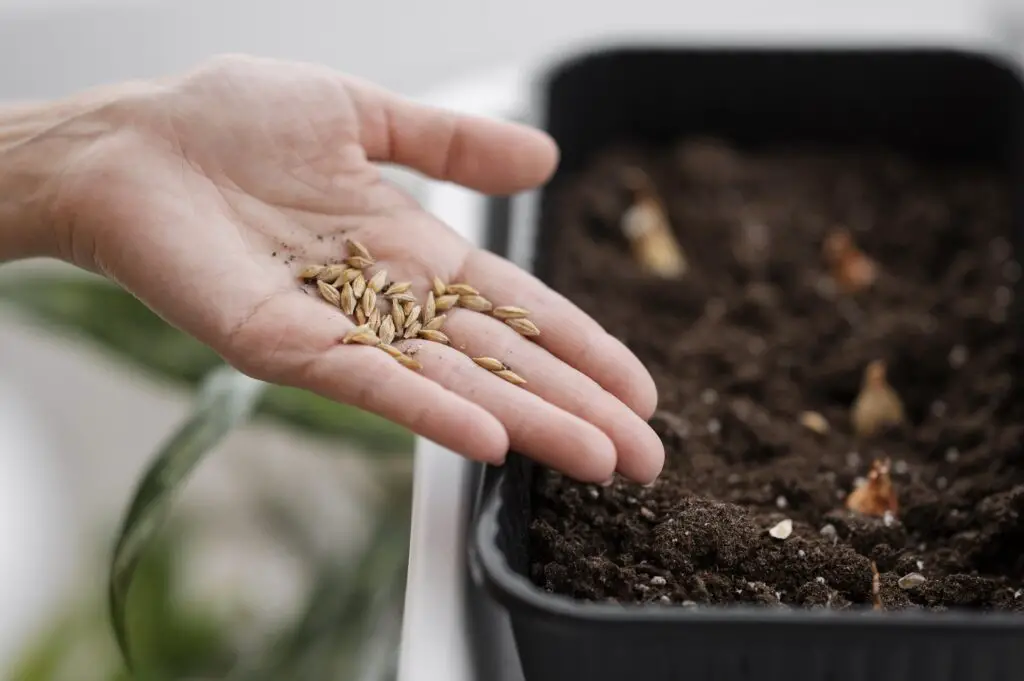
Transplanting Seedlings into Hydroponic Systems
When it comes to transplanting seedlings into hydroponic systems, it is important to handle them with care to ensure their successful transition. Before moving the seedlings, make sure that the hydroponic system is properly prepared and set up. This includes checking the pH levels and nutrient solution in the system, ensuring that the water temperature is optimal, and confirming that all equipment is clean and in good condition.
Once the hydroponic system is ready, gently remove the seedlings from their original container, being careful not to damage the roots. It is recommended to hold the seedling by the leaves rather than the stem, as the stem is more delicate and can be easily injured. Place each seedling in the prepared hydroponic system, making sure that the roots are fully submerged in the nutrient solution. Take care to avoid overcrowding, as this can lead to poor air circulation and increased risk of disease. After transplanting, monitor the seedlings closely for any signs of stress or nutrient deficiencies, and make adjustments as needed to ensure their healthy growth.
With the proper techniques and attention to detail, transplanting seedlings into hydroponic systems can be a smooth and successful process. By providing the ideal growing environment and closely monitoring the seedlings after transplantation, you can set the foundation for healthy and productive zucchini plants. So, take the time to prepare your hydroponic system and handle the seedlings with care, and you’ll be on your way to a thriving zucchini crop.
Maintaining Optimal pH Levels for Hydroponic Zucchini
Maintaining optimal pH levels is essential for the successful cultivation of hydroponic zucchini. As a gardener, you must understand that pH refers to the acidity or alkalinity of the nutrient solution in your hydroponic system. Zucchini plants thrive best within a specific pH range, which allows for the optimal absorption of nutrients and promotes healthy growth.
Ideally, the pH of the nutrient solution for hydroponic zucchini should range between 5.8 and 6.5. This slightly acidic to neutral range ensures that essential nutrients are readily available to the plants, maximizing their uptake efficiency. Any deviation from this range can lead to nutrient deficiencies or toxicities, stunting plant growth and reducing overall yield.
To maintain the optimal pH levels, regular monitoring and adjustment of the nutrient solution are necessary. pH testing kits or meters can help you accurately measure the pH levels in the solution. If the pH strays from the desired range, you can make adjustments using pH up or down solutions. It is important to make gradual changes and retest the pH after each adjustment to avoid sudden shifts that could stress the zucchini plants. By keeping a close eye on the pH levels and maintaining them within the appropriate range, you can create an ideal environment for your hydroponic zucchini to thrive and produce bountiful harvests.
Monitoring and Managing Water Quality in Hydroponic Systems
Water quality is a crucial factor to consider when monitoring and managing hydroponic systems for optimal zucchini growth. The quality of water directly affects the health and productivity of the plants. It is essential to ensure that the water used in hydroponic systems is clean, properly balanced, and free from contaminants that can harm the plants.
One of the key aspects of managing water quality is maintaining the appropriate pH level. Zucchini plants thrive in slightly acidic conditions, with a preferred pH range of 5.8 to 6.2. Monitoring the pH of the water on a regular basis is essential to ensure it remains within the optimal range. Adjustments can be made using pH adjusters, such as pH up or pH down solutions, to maintain the desired levels. By keeping a close eye on the pH, hydroponic gardeners can create the ideal environment for healthy zucchini growth.
Another important factor to consider when monitoring water quality in hydroponic systems is the nutrient concentration. Essential nutrients, such as nitrogen, phosphorus, and potassium, need to be carefully balanced in the water to provide zucchini plants with the necessary nutrition. Nutrient imbalances can lead to stunted growth, nutrient deficiencies, or even nutrient toxicities. Regularly testing the nutrient levels in the water and adjusting them as needed ensures that the plants receive the proper amount of each nutrient for optimal growth. By maintaining a balanced nutrient concentration, gardeners can support the development of robust and productive zucchini plants in their hydroponic systems.
Managing Temperature and Humidity for Healthy Zucchini Growth
To ensure healthy growth and maximize yields in your hydroponic zucchini cultivation, it is crucial to maintain optimal temperature and humidity levels. Zucchini plants thrive in warm temperatures between 70 to 85°F (21 to 29°C), with humidity ranging from 50% to 70%. These conditions closely mimic their natural outdoor growing environment, providing the perfect balance of warmth and moisture for robust plant development.
Maintaining a consistent temperature is key to promoting healthy zucchini growth. Fluctuations in temperature can stress the plants and hinder their productivity. Invest in a reliable thermometer to monitor the temperature inside your hydroponic system regularly. If necessary, consider using a heater or cooling system to maintain the ideal temperature range. Additionally, ensure proper ventilation and air circulation within the growing area to prevent the buildup of heat and humidity.
Humidity levels also play a vital role in the success of your hydroponic zucchini crop. High humidity can lead to the growth of fungal diseases, such as powdery mildew, while low humidity can cause water stress and inhibit plant growth. To optimize humidity levels, use a hygrometer to measure the moisture content in the air. If humidity is too high, increase air circulation and consider using a dehumidifier. On the other hand, if humidity is too low, utilize a humidifier or strategically place water reservoirs or trays to increase moisture in the environment.
By carefully managing temperature and humidity, you can create an ideal growing environment for your hydroponic zucchini plants. The next section will delve into the essential techniques for pruning and training your zucchini plants to ensure optimal growth and productivity.
Pruning and Training Techniques for Hydroponic Zucchini Plants
Pruning and training techniques are essential for promoting healthy growth and maximum productivity in hydroponic zucchini plants. By properly pruning and training your plants, you can control their shape, direct their energy towards fruit production, and prevent diseases.
When it comes to pruning, the main objective is to remove any dead or diseased leaves, as well as any weak or overcrowded branches. This not only improves air circulation around the plants but also allows adequate light penetration, promoting photosynthesis and ensuring all parts of the plant receive the necessary nutrients. Additionally, pruning also helps in maintaining a tidy and organized growing space, reducing the risk of pests and diseases.
| Technique | Description |
|---|---|
| Single Stem Pruning | Remove side shoots, allowing one main stem to develop. |
| Pinching Tips | Pinch off the growing tips to encourage bushier growth. |
| Lateral Shoot Removal | Remove lateral shoots to focus energy on main growth. |
| Leaf Thinning | Thin out excessive foliage to improve air circulation. |
| Trellising | Provide support for vines to prevent sprawling. |
| Vertical Growing | Train plants upward to maximize space and light. |
| Regular Inspection | Regularly inspect for pests, diseases, and nutrient needs. |
| Prune Yellow Leaves | Remove yellow leaves to maintain plant health. |
| Fruit Thinning | Remove excess fruit to promote larger, healthier ones. |
| Continuous Harvesting | Harvest zucchinis regularly to encourage new growth. |
| Nutrient Monitoring | Monitor and adjust nutrient levels in the hydroponic system. |
| Light Optimization | Ensure consistent and adequate light for plant growth. |
Training techniques, on the other hand, involve manipulating the growth pattern of the zucchini plants to ensure optimal productivity. One commonly used training method is trellising, where the main stem of the plant is supported by a trellis or stake. This not only prevents the zucchini fruits from touching the ground, reducing the risk of rot and disease, but also allows for easier access during harvesting. Similarly, you can use natural supports such as tomato cages or trellis netting to train the side branches, providing them with additional support as they grow. Through proper training, you can create a vertical growth structure, maximizing space utilization while promoting better air circulation and light exposure.
Preventing and Managing Common Pests and Diseases in Hydroponic Zucchini
Hydroponic zucchini cultivation offers a controlled environment that minimizes the risk of pests and diseases. However, it is still important to be proactive in preventing and managing common issues that may arise. One of the most effective ways to prevent pests and diseases in your hydroponic zucchini is by maintaining a clean and sterile growing environment. Regularly sanitize your equipment, including containers, pumps, and tools, to prevent the buildup and spread of pathogens. Additionally, ensure that your water source is free from contaminants, as contaminated water can introduce harmful bacteria or fungi to your plants.
Another important aspect of pest and disease management is monitoring and early detection. Regularly inspect your plants for any signs of infestation or disease, such as wilting, discoloration, or unusual growth patterns. If any issues are identified, take immediate action to mitigate the problem. Integrated pest management techniques, such as introducing beneficial insects or using organic pest control methods, can be effective in preventing and managing pests without causing harm to your plants or the environment.
Remember, preventing and managing common pests and diseases in hydroponic zucchini requires a proactive approach. By maintaining a clean and sterile growing environment, monitoring your plants closely, and implementing appropriate pest control measures, you can minimize the risks and ensure the health and productivity of your hydroponic zucchini crop.
Harvesting and Enjoying Your Hydroponic Zucchini Bounty
Harvesting and enjoying your hydroponic zucchini bounty is the culmination of weeks of careful nurturing and cultivation. As you see the vibrant green zucchinis hanging from the vines, it’s time to determine the perfect moment for harvest. The size of the zucchini is a key indicator, with smaller zucchinis usually having a more tender and flavorful taste. Aim for zucchinis that are around 6-8 inches in length, as they are at their peak freshness and texture. Harvesting regularly promotes further growth, so remember to pluck the zucchinis as soon as they reach the desired size.
Once you have harvested your hydroponic zucchinis, it’s time to revel in the flavorsome rewards of your laborious efforts. The great advantage of hydroponic cultivation is that the zucchinis are free from soil contaminants, leading to cleaner and more delicious results. You can enjoy your hydroponic zucchinis in a multitude of ways. Sauté them with a medley of other garden vegetables for a delightful stir-fry, stuff them with your favorite ingredients for a delectable stuffed zucchini dish, or grate them to create mouthwatering zucchini bread or muffins. The possibilities are endless, and with the freshness and flavor of your homegrown zucchinis, your culinary creations are sure to be elevated to new heights.
Can I use any type of zucchini for hydroponic cultivation?
It is recommended to select zucchini varieties specifically suited for hydroponic cultivation. They are often more compact and have a higher yield potential in this growing system.
What is the ideal pH level for hydroponic zucchini?
The ideal pH level for hydroponic zucchini is between 5.8 and 6.5. This range ensures optimal nutrient uptake and overall plant health.
How often should I monitor water quality in my hydroponic system?
It is recommended to monitor water quality in your hydroponic system on a regular basis, at least once a week. This helps ensure the nutrient solution remains balanced and free from any potential issues.
Can I control temperature and humidity in a hydroponic setup?
Yes, you can control temperature and humidity in a hydroponic setup. Using proper ventilation, fans, and temperature control systems, you can create the optimal growing environment for your zucchini plants.
How often should I prune my hydroponic zucchini plants?
It is recommended to prune your hydroponic zucchini plants regularly to promote better air circulation and prevent overcrowding. Pruning should be done when necessary, such as removing excessive foliage or damaged branches.
What are some common pests and diseases that can affect hydroponic zucchini?
Common pests that can affect hydroponic zucchini include aphids, whiteflies, and spider mites. Diseases such as powdery mildew and root rot can also occur. Implementing proper pest management techniques and maintaining a clean growing environment can help prevent and manage these issues.
How do I know when my hydroponic zucchini is ready for harvest?
Hydroponic zucchini is typically ready for harvest when the fruits reach a desired size, usually around 6 to 8 inches in length. Harvesting should be done by gently cutting the zucchini from the plant using a clean knife or shears.
Can I consume hydroponic zucchini raw?
Yes, hydroponic zucchini can be consumed raw. It can be enjoyed in salads, as a snack, or used in various raw preparations. Cooking methods like grilling, roasting, or sautéing are also popular options for preparing hydroponic zucchini.

Pallavi Gupta is a burgeoning writer at SouthElMonteHydroponics, blending her passion for data analysis with a keen interest in biotechnology. Currently pursuing a Bachelor’s in Biotechnology at Amity University, Pallavi delves into the intricacies of life sciences while gaining hands-on experience in the exciting world of data analysis. Her unique background provides a fresh perspective on hydroponic farming, as she explores the intersection of biotechnology and sustainable agriculture. Through her writing, Pallavi aims to bridge the gap between data-driven insights and innovative farming practices, inspiring others to harness technology for a greener future.

